2012 Civil War Travelogue
Welcome to my 2012 travelogue page, commemorating the second year of the Civil War Sesquicentennial! (Since these reports tend to be lengthy, they are often in separate HTML pages. Use the links just below to see all the finished reports.)
| Here is a reminder about the reason I write these pages the way I do. They record my experiences and impressions of Civil War trips primarily for my future use. Thus, they sometimes make assumptions about things I already know and focus on insights that I receive. They are not general-purpose descriptions for people unfamiliar with the Civil War, although I do link to various Wikipedia articles throughout. Apologies about the quality of interior photographs—I don't take fancy cameras with big flashes to these events. If you would like to be notified of new travelogues, connect to me via Facebook. |
Here are my completed trips:
- CWEA tour of Shiloh, April 18–21
- Civil War Institute at Gettysburg College, June 22–27
As you can see, my travel schedule is regrettably light this year. My cartography business (see CWMaps.com) is keeping me very busy, particularly since I have two books of my own coming out pretty soon.
Here are trips that were on my backup interest list:
- BGES: Jackson's Valley Campaign, April 10–14
- BGES: Atlanta Campaign, Part 1, May 11–14
- Pamplin Park: Jackson's Valley Campaign, May 17–20
- Civil War Trust annual meeting in Richmond, June 7–10 (concentrating on the 1862 Peninsula Campaign)
- Chambersburg: Antietam, July 25–29
- Chambersburg: South Mountain, September 28–30
- Mosby: Chancellorsville, October 5–7
- BGES: The Federals Grab a Foothold, The Battles of Port Royal Sound, Fort Pulaski, and Secessionville, October 17–20
- Pamplin Park: Seminar on 1862, October 19–21
- CWEA: Savannah and Beaufort, November 14–17
- BGES: Walking Tour of Stones River, December 12–15
The Campaign for Shiloh: A Seminar and Field & Walking Tour (Civil War Education Association), April 18–21, 2012
Here I am at the Hampton Inn in cosmopolitan Corinth, Mississippi, to tour with my friends at the CWEA. This is my third tour with the CWEA and my second visit to Shiloh. My first visit did not go very well at all, as you can see in my report (scroll down to the Friday entry) so I am hoping for a better experience this time with more quality time on the battlefield. Here is our agenda. Here's my Wikipedia article on Shiloh. I am also hoping I can use this trip to help me improve my maps of Shiloh for a book on Grant's battles I am working on.
Thursday, April 19
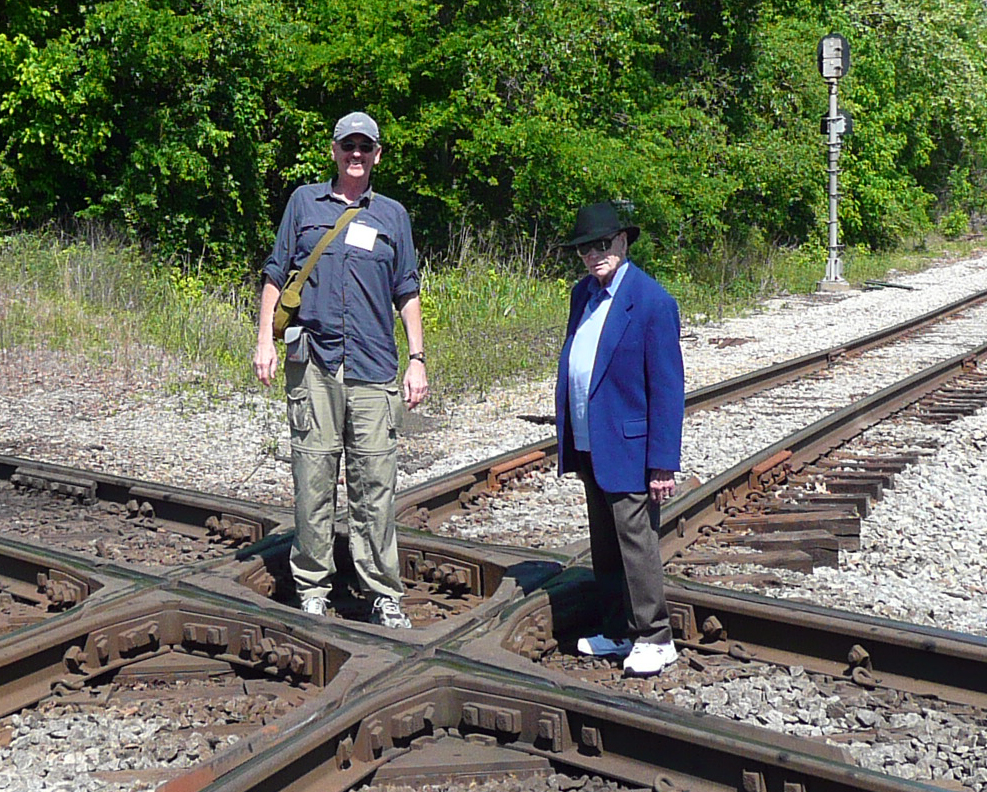
We started the day in the hotel with three lectures. Tim B. Smith, formerly of the National Park Service and a rather prolific author on Western theater battles, gave us an overview of the battlefield terrain. It was an interesting look at the defensive properties of the area, with streams and ravines laid out so that the higher ground was in somewhat of an hourglass shape. He showed the Union defensive positions at various times on April 6 that required the Confederates to traverse these ravines, making them rather formidable. The location where the Union line broke was in the center of the hourglass—Shaver's brigade—where the Confederates had few obstacles to overcome. On April 7, the situation was reversed and the Confederates used the terrain to their advantage, at least for a while. Although the classic complaint about Sherman and Grant is that they did not anticipate a Confederate attack and did not entrench, Sherman did provide a modicum of defensive measures, including stationing brigades at all of the critical entry points to the area. All agreed that if the Union had put up entrenchments at the southern end of the battlefield, the position would have been virtually impregnable.
Charles P. Roland is a venerable Civil War historian and the author of the definitive biography of Albert Sidney Johnston, Soldier of Three Republics. He gave us a brief description of Johnston's early career and then an overview of the Western theater defensive line in 1861. He described the decision to reinforce Fort Donelson just after deciding to essentially abandon that line and move to northern Mississippi as a mistake on Johnston's part. Johnston wrote to president Davis and described his proposed attack at Shiloh, indicating how his three corps would attack simultaneously in sectors, with Bragg's corps on the right the primary effort (intending to drive the Union into Owl Creek), but then described the problem of his delegating the marching orders and battle preparation to PGT Beauregard, who completely changed the plan. He described the meeting on April 5 in which Beauregard urged that the attack be called off because of lack of surprise, the "moment of truth" and compared the situation to Eisenhower just before D-Day. After describing the circumstances of Johnston's death, he judged that Beauregard made an error in calling off his attack for the evening, regardless of how difficult it would have been. He said that he should have attacked or withdrawn before the massive Union counterattack on April 7. He also praised Johnston's conduct in the battle, saying that having senior officers near the front was critical for morale, particularly given that so many of the Confederate troops were green.
John Marszalek is executive director of the Ulysses S. Grant Association and the author of an important biography of Sherman, Sherman, A Soldier's Passion for Order. He started with a description of a very public argument between Sherman and former Union general James B. Fry in 1884. Fry was with the Army of the Ohio and claimed in an article that Don Carlos Buell actually won the battle of Shiloh. Shiloh was really the battle that turned around Sherman's career, giving him the "first real taste of military order." He was responsible for selecting Pittsburg Landing as a good staging ground for the eventual movement toward Corinth. John acknowledged that Sherman was somewhat surprised by the Confederate attack, but he did send out patrols. When faced with intelligence from his junior officers about Confederates in his front, he chose to lend more credence to the opinions of his superior, Grant, who had given him an opportunity to recover from the embarrassments of his earlier career. Sherman and Grant reinforced each other's confidence at the battle and Sherman was encouraged by Grant's determination to fight as well as his survival in the command shakeup after the battle.
We jumped onto our large bus—there are 36 folks in the group (all of whom supposedly qualified for senior citizen discounts at lunch today!)—and drove a couple of miles to downtown Corinth, a sleepy little town of 50,000 residents. The strategic significance of Corinth during the war was the intersection of two critical railroad lines and those two lines still cross today. The historic railroad depot is now a museum, which we did not enter, but we had a discussion outside about the railroads, which Charles described as the "vertebrae of the Confederacy."
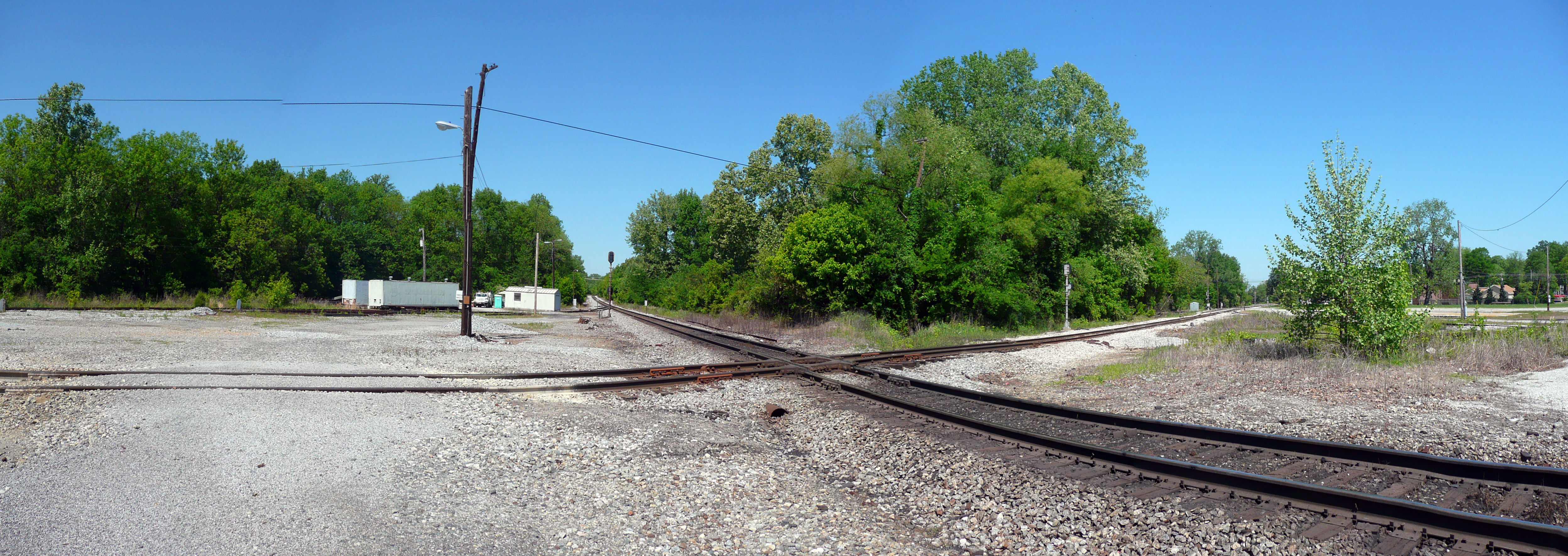
After lunch in a buffet restaurant, we drove to the Corinth Interpretive Center for a brief visit. I hiked outside to visit the site of Battery Robinette, which was a critical point in the October battle of Corinth (fought by my man William S. Rosecrans against Earl Van Dorn). I also took some time to revisit the water sculpture in the back that shows history flowing through the Civil War, going past large stone blocks representing battles, eventually resulting in the three amendments to the Constitution after the war. Rather odd, but attractive.
On the way out of town, Tim pointed out a few houses that were used as headquarters by the different sides. We headed toward the Shiloh battlefield, but did not take the direct route on the modern highway. Instead, we generally followed the course taken by half of the Confederate Army (Hardee and Polk) on its approach to Shiloh. It was nothing really remarkable about the route, but it was interesting to see the distances covered and to try to imagine negotiating these rolling hills on muddy roads. Along the way I found out that the Civil War era town of Monterey is now called Michie (which is pronounced like the famous mouse) and that the location of the historic Mickey's farmhouse is now called Pebble Hill. We drove through the area in which the Falling Timbers action took place on April 8, which has recently been preserved by the Civil War trust. We stopped at the Last Bivouac of Albert Sidney Johnston on the night before the battle. This was outside the boundaries of the national park, toward the rear of the Confederate battle formation, among the troops of John C. Breckinridge's reserve corps. We had another discussion of the important meeting between Johnston and his subordinates, Roland's moment of truth, and we got to hear some of Johnston's pithy quotes: "I will fight them if a million." "We must conquer or perish." "We will roll the iron dice of battle." (I particularly like that last one.) The meeting in question actually happened that Beauregard's headquarters a bit farther toward the front, at Which we could not stop, but waved to it as we drove by.
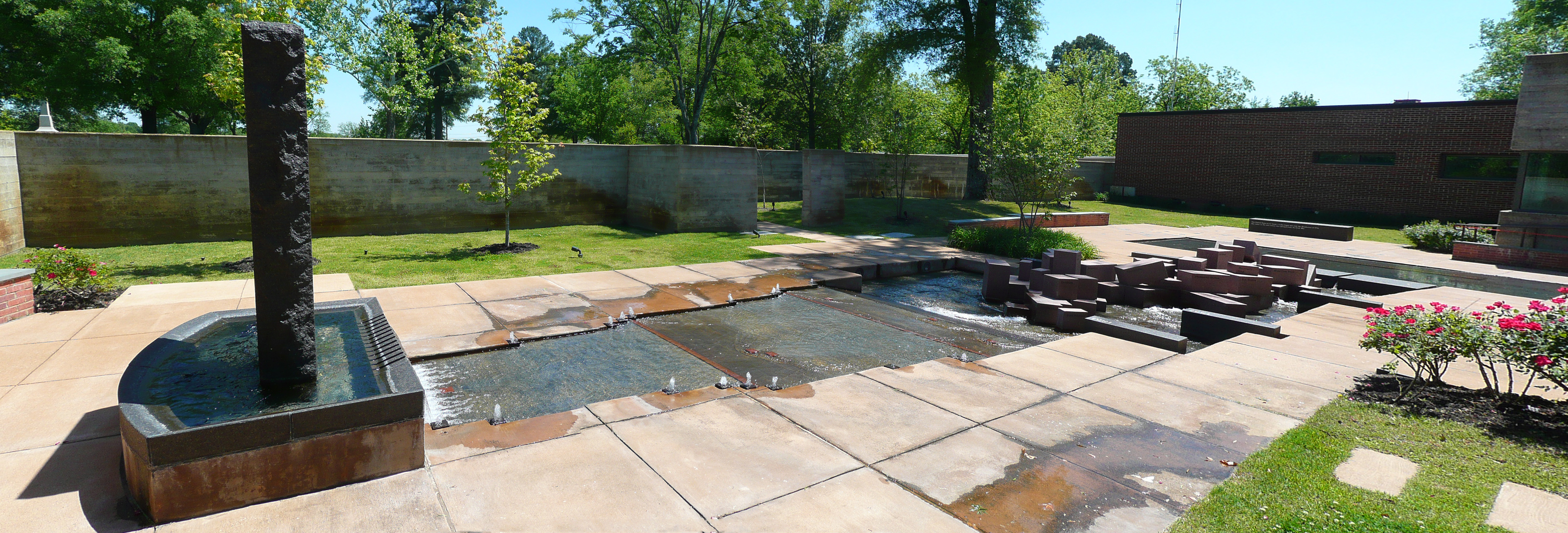
We finally reached the battlefield, allocating only a brief time today for an overview. We stopped at the Visitor Center bookstore, but did not have time to see the exhibits or the new movie about the battle. I hope we will have a chance to see that tomorrow, but it is over 50 minutes long, so some scheduling acumen is required. We walked through the national cemetery, which is really strikingly beautiful. There are about 4,000 people interred there, including four Confederate soldiers, although no one seems to know why they are there. There is a very prominent gravesite near the front for a drummer boy and Tim deflated that balloon by revealing the guy was 21 years old and a professional musician, not some little kid. (The most famous drummer boy of the war, Johnny Clem, has been said by some to have been at Shiloh, but Tim said that his regiment was not even formed until that fall. Tim referred to thousands of claims of being drummer boys at Shiloh, and I wondered how anyone was able to hear the musketry fire with all that drumming going on.)
We walked down the hill to Pittsburg Landing and Tim gave us an overview of the Union arrival there, a few weeks before the battle. The Tennessee River was narrower at the time and the landing is a bit smaller than it was then. We drove back on the modern highway and there was a reception in the hotel meeting room. Bob Maher and the CWEA throw a nice little party.
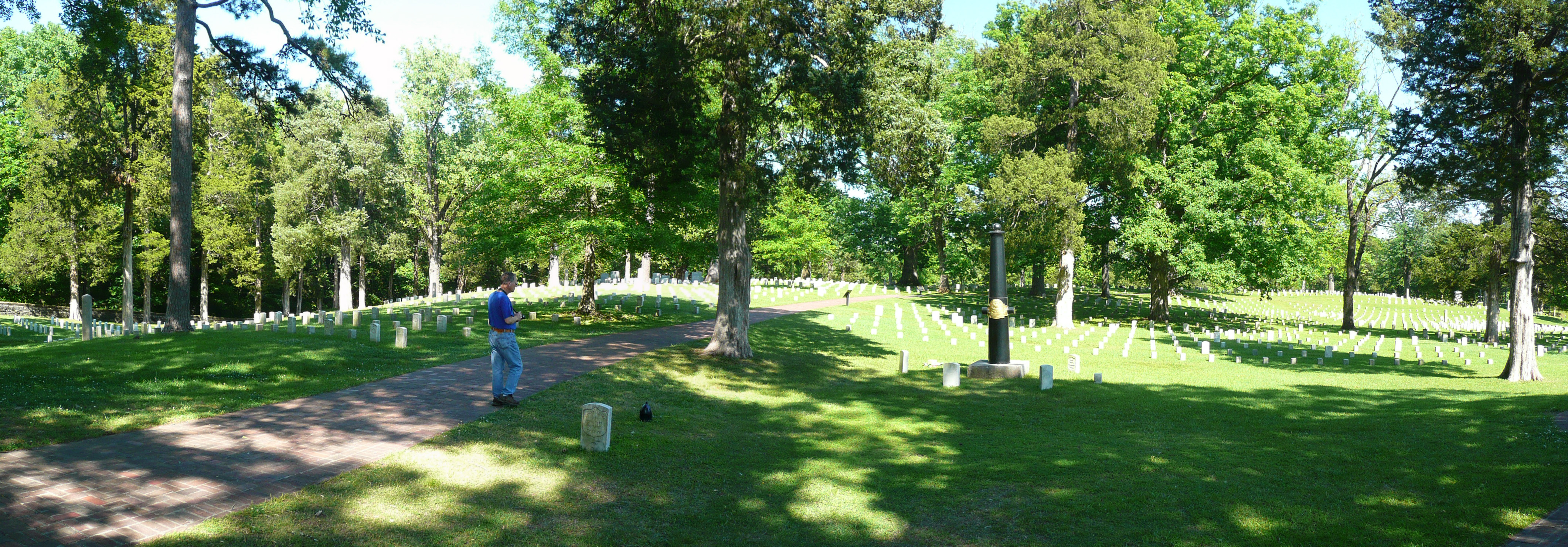
Friday, April 20
We drove to the visitor center and picked up Tim for our first full day of battlefield touring. On the way to our first stop we pulled up next to the overall Confederate monument, dedicated in 1917. Unfortunately, my picture taken through the bus window has a reflection of one of my handsome traveling companions prominently displayed in front of the statue. (The photo below is from Saturday and I time-traveled back to put it here.) It was an interesting one with a lot of symbolism, showing a lady handing the wreath of victory to the figures of death and night. (I was able to interpret this symbolism, but I will leave it as an exercise to the reader.) Tim said that the cornerstone is full of the number of interesting items, including a lock of Albert Sidney Johnston's hair and some KKK robes.
The battle started at Fraley Field, so it was an obvious first stop. Here we reviewed the controversies regarding whether the Union troops were surprised or not by the Confederate attack, which some have compared to the surprise at Pearl Harbor. (Fortunately, none of the Union aircraft carriers were present that morning.) Tim's judgment is that it was a strategic surprise, but not a tactical one. A reconnaissance patrol led by Maj. James Powell of the 25th Massachusetts gave adequate warning to the front-line troops, and stories that the Confederates bayoneted sleeping Union soldiers in their tents are fictions, which we can trace to an inflammatory newspaper story by Whitelaw Reid. Even though the troops at the southern part of the staging area/battlefield were unfortunately the ones with the least experience, by the time the Confederates reached them, well over an hour had passed and they encountered the Union soldiers in battle line on good defensible ground above Shiloh Branch. We discussed the difficulty of maintaining unit cohesion when the battle line is over a mile long, and Charles Roland opined that the reason Civil War commanders used the tight linear formation was not because they were stupid and did not understand the defensive power of rifled muskets, but that command and control would otherwise be impossible. Tim remarked that PGT Beauregard's battle plan, which approached the battle in a column of corps, was essentially the same that Napoleon used at Waterloo.
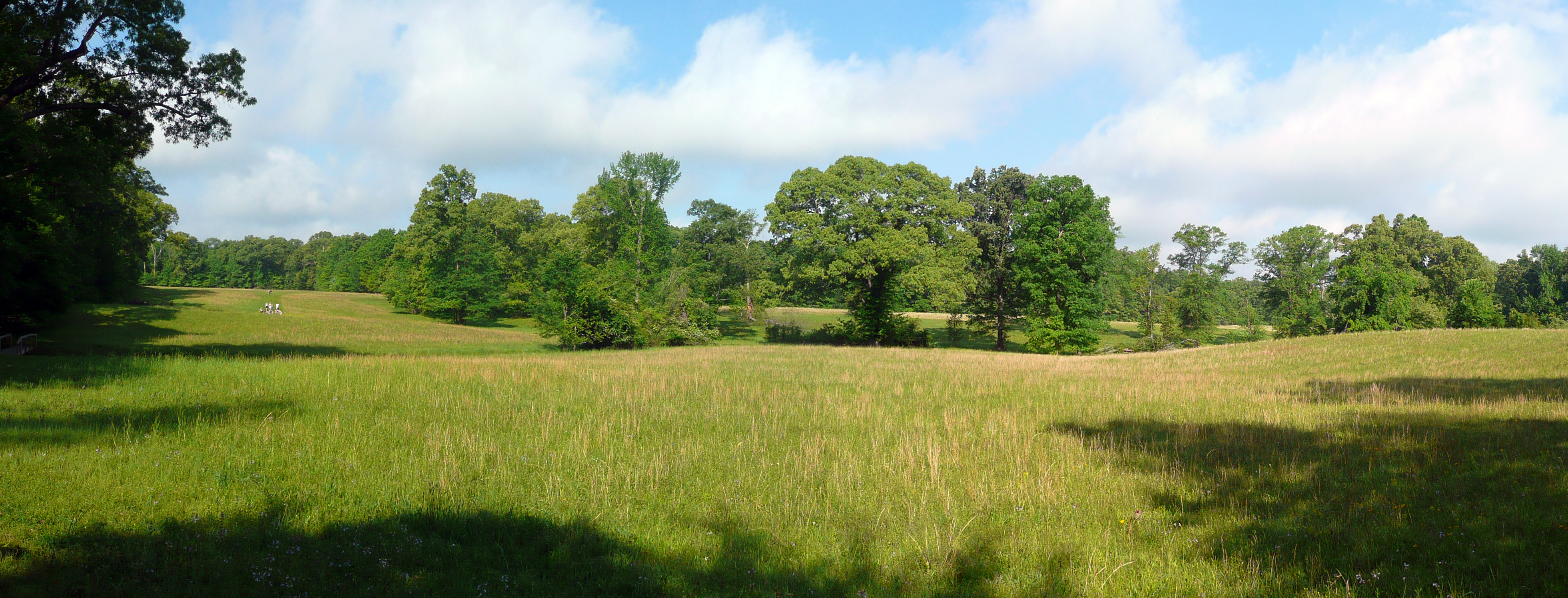
We stopped on the Corinth Road where Shiloh Branch crosses and we could see the long slope up from that low ground. Sherman's troops at the top of the slope were in a position that looks even better than Cemetery Ridge at Gettysburg, although they did not have open fields of fire that good. Patrick Cleburne's brigade assaulted seven or eight times up the slope, but the Union defenders in Sherman's division could not be dislodged and the line held until 10 AM, when Prentiss's division, on Sherman's left, had to withdraw. we wandered around the Shiloh Church site as part of this discussion. The original church was a little log cabin, which did not survive the war, but the Sons of Confederate Veterans created a replica. There is also a modern Shiloh Church that was started in the 1920s, ran out of money half built, and then completed later. Tim said it was the third generation of churches on that site.
This tour was billed as a field and walking tour, and for the first (and only) time today we got to take a walk more strenuous than getting on and off the bus. We walked about a quarter-mile through the woods and passed by Rhea Springs. Charles told us a story about having a picnic there in the 1920s—he has quite a memory of his early life—and drinking fresh water from the spring, which no one today would risk (particularly since there is a sign right next to it that points to a Confederate burial site). It was a very pretty spot and Tim said that there are weddings held there frequently. Then we walked up the hill to see Rhea Field. It was here that Sherman was shot in the hand and finally acknowledged that a real battle was underway. Tim told us that in the Battlefield Detectives TV show, he portrayed Sherman in that scene! The real drama on the field, however, was the fate of the 6th Mississippi, which charged multiple times against the 53rd Ohio and suffered 70% casualties. The Mississippi State monument is nearby because of that.
We drove to Spain Field, at the site of the Adley Gladden Memorial—a brigade commander in Braxton Bragg's corps. We talked about the initial attacks against Prentiss's division. It was here that Tim described Albert Sidney Johnston making the biggest blunder of the battle, where he started to turn his force prematurely. There was a gap between Prentiss and Stuart's brigade of Sherman's division, and Johnston apparently thought he was dealing with the far left flank of the Union Army. Then we drove along Bark Road then turned left to drive north across Locust Grove Branch. There was quite a significant rise that the Rebels—the brigades of Jackson and Chalmers—had to negotiate in their advance against Stuart.
We drove to Savannah, Tennessee, about 9 miles down river, which was the location of Grant's headquarters. We had lunch at a small restaurant called the Hickory Pit, and with the round-trip time and the lengthy lunch, I am sorry to say we lost about two hours of good battlefield time. We stopped outside the Cherry mansion, where Grant stayed, but it is a private residence and we could not get too close. Here on April 10, W.H.L. Wallace died of his wounds from the Hornets Nest, and on April 25 C.F. Smith died from his pre-battle leg injury. (Thanks to Betty Callis for pointing out Wallace, which no one else noticed.) On the way back we drove by Crump's Landing, which is where part of Lew Wallace's division was stationed. In the tiny town of Crump, I was amused to see a sign of a restaurant claiming to be "the finest Chinese buffet in town." That was undoubtedly true, although possibly not much of a compliment.
Back at the battlefield, we stopped at the area known as the Crossroads, where the Corinth Road and the Hamburg-Purdy Road intersect. This was the area of the Union line around 11 AM, after being pushed back from the Shiloh Branch line and Shiloh Church. In Tim's opinion, by this point the Confederates had effectively lost the battle, a viewpoint that is rather controversial. But he pointed out that the first six hours of the battle had seen 15 of the 16 Confederate brigades heavily engaged against only six or seven of the 15 Union brigades, and had not accomplished a lot. They were a spent force. There were still eight fresh Union brigades that they would have to contend with, and because of the way the Union forces were positioned, these were the relatively veteran brigades yet to come. We got an overview of the second phase of the battle, which ran from approximately 11 AM to 4:30-ish. Sherman and McClernand were both pushed back through Jones Field, and in the second big surprise of the day, they counterattacked, buying even more time for the Union to prepare defensive lines at Pittsburg Landing. Because of time dribbling away, we only got to do a drive-by of this area on the way back to the visitor center.
I was a bit disappointed that we have not been able to spend more quality time on the battlefield today. On Saturday we are going to have to cover all of the activities on the Confederate right and in the center (the sunken road and Hornet's Nest), the final phase of the first day around Pittsburg Landing, and all of the second day of battle. And we also have to make time for a lengthy lunch at the notorious Catfish Hotel.
We had a group dinner at the Dinner Bell restaurant, which was a very modest, bustling southern restaurant. We had remarks from professors Roland and Marszalek as well as a pitch from Kim Johnson about an effort to raise funds for a Confederate veteran's memorial at Shiloh. He mentioned that the sculptors of the Iowa and Illinois of monuments (the latter pictured above) used their wives as the models for the female figures.
Saturday, April 21
The weather really changed today. Yesterday it was beautiful, sunny in the 70s, but today was drizzly and 30° colder. It was amusing to see people who had only brought shorts for this trip. Today we also got to do some nontrivial walking.
We started at the visitor center by watching the 45 minute film, Fiery Trial, which was just released this month. The previous NPS film had been shown for 56 years! I thought it was pretty decent and very well made, narrated by Peter Coyote, featuring lots of reenactor battle scenes and some very good animated map work. I got new insight into the challenges of the Confederate quartermaster, having to supply all of those XXL uniforms. Albert Sidney Johnston was portrayed by Stacy Allen, the longtime NPS historian at Shiloh, and I can't say there was very much of a resemblance. I was not overjoyed by the choice to spend an hour of our dwindling time on a movie, but people seemed to enjoy it and inside the theater was a lot warmer than outside.
We drove to the Albert Sidney Johnston mortuary monument, one of those affairs designed by a committee and engineers with concrete and cannonballs on hand. We actually spent well over an hour talking about the death of the Confederate general. Tim told an amusing story about visiting that location exactly 150 years later to the minute, inviting Wiley Sword and James Lee McDonough to go with him. Wiley, of course, insisted that the location was wrong, and that even the positioning of the brigade Johnston accompanied was wrong. Charles Roland seemed amused by this tale because McDonough was a leading proponent for the idea that Johnston really bungled the battle, so there was some irony in having him go along—like having him dancing on the grave. He also said that the general location of Johnston's wounding and death were documented by Isham Harris, who seemed to have a good memory and no reason to change the facts. We had a lengthy discussion about veterans' memories of battlefields and also about the military character of Johnston.
Next was Sarah Bell's field and the Peach Orchard. The latter is rather unusual because each of the trees is surrounded by a fence, but Tim told me this was not intended to be historically accurate, just an attempt to prevent some deer feasting. Adjacent to the orchard is Bloody Pond, which Tim thinks has been over emphasized in touring. He considers it simply an artifact of the early park commission wanting to have memorable landmarks for tourists to visit. There is no documentation that a pond in that location had any unusual infusion of blood near it. Another feature nearby that has achieved fame is the Sunken Road, which leads to the famous Hornets Nest. No contemporary documentation exists to explain why this dirt farm trail was considered sunken, and Tim has written an article about how it was only a few inches deep at the most. It was not a deep defensive trench, like the sunken road at Antietam, for example. We walked down the road and reached the area of the Hornets Nest, at which time the bus snatched us up and we were off to the Catfish Hotel.
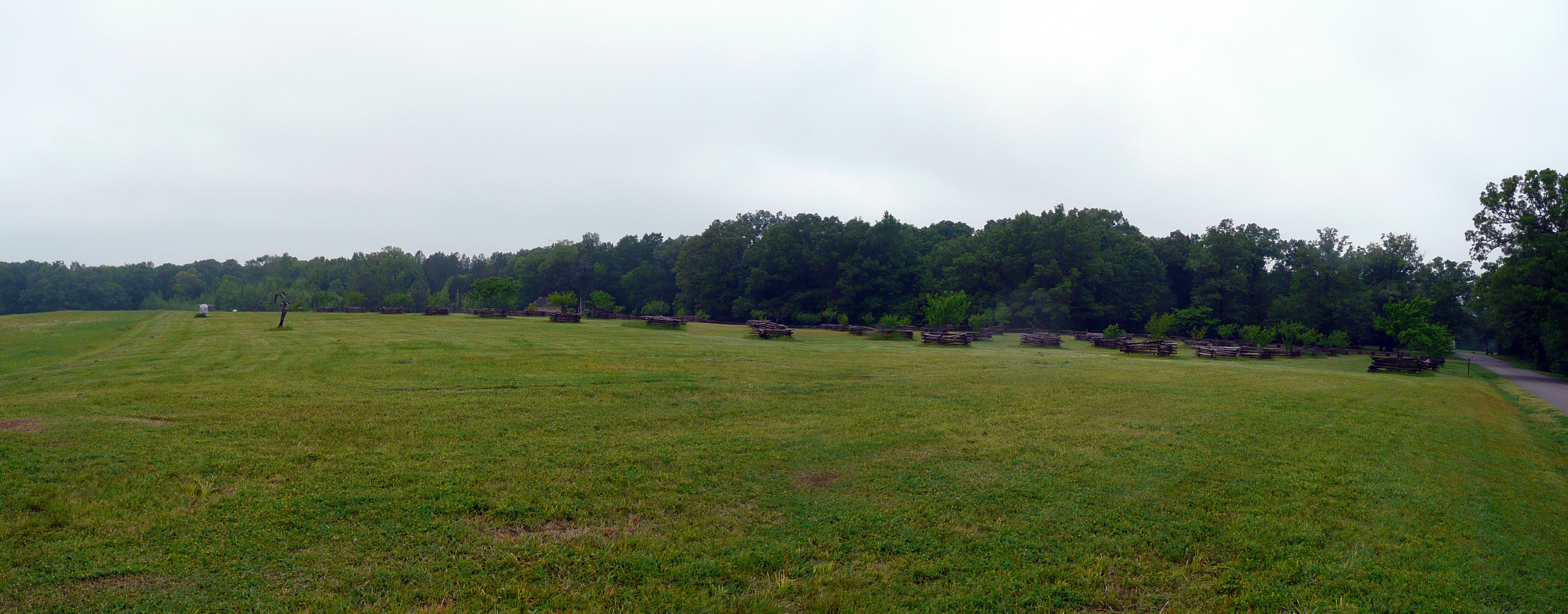
If you read my report of my 2006 visit, you will recall that Wiley Sword raced us through the battlefield, skipping key points, so that we would have enough time to eat lunch at this [in]famous restaurant. So it was déjà vu all over again. The restaurant has not changed since then, still serving lots of fried food family-style. There were fried catfish, fried chicken strips, fried ham slices, fried hush puppies, and french fries. Not too bad, but I would've preferred to have a sack lunch and spent more time examining the battle. One funny incident at lunch was when Tim asked 94-year-old Charles whether he had planned for the bicentennial of the battle, and Charles replied that he did not even buy green bananas.
We returned to the Hornets Nest, which Tim identified as a slight knoll in the center of the sunken road area. (Some people, and NPS signs, conflate the two areas entirely.) This was the area of the most determined Union resistance during the afternoon, withstanding anywhere from 7 to 12 attacks before the neighboring units had to pull back and the Confederates surrounded the nest. (Speaking of nests, on the way back we saw a giant bald eagle nest in a high tree near the peach orchard. The pair of eagles are named Hiram and Julia.) One thing I did not realize is that the famous bombardment by the massed Confederate batteries in Duncan Field, under Ruggles, was actually focused on counterbattery fire, not anti-personnel. Tim addressed complaints that Braxton Bragg seemed like an idiot for repeatedly attacking with the same brigade over and over. But in fact, of the 16 Confederate brigades at the battle, only one—Randall Gibson's—was available to Bragg at all.
We talked about the historiography of the nest and how it has long seemed to be the most critical part of the battle. One reason for this is that David Reed, the first historian of the battle, was in the nest himself, stationed with the 12th Iowa. We hiked over to the place in the woods where Benjamin Prentiss surrendered and had a long discussion about how Prentiss's report neglects to mention that WHL Wallace in fact had many more troops there than Prentiss did, and it is only because of Wallace's mortal wounding that Prentiss is often considered the hero of the action.
Our final stop was Dill Branch ravine, the physical obstacle that impeded the attempted final Confederate assault before they reached the massed artillery batteries on the northern edge of the ravine. I thought about climbing down, but it was very, very steep and a little bit muddy, so I demurred. About a dozen hardy souls made the trek and some of them returned with giant mud marks on their bottoms.
We had come to the end of our time and Tim was given six minutes to summarize the first day's battle, and describe the second day's action ("like Day 1, but in reverse") and the aftermath. This was pretty disappointing and I wish better time management had been applied. I never considered that a three day tour of Shiloh would be insufficient time, but relatively short days and other priorities got in the way.
Despite the time disappointment, I was impressed with the job that Tim Smith did, and I appreciated all of the insights from John and Charles. Bob Maher and his staff did a good job on the logistics and made everyone feel welcome. And brought lots of cookies.
My next trip is to the Civil War Institute at Gettysburg College in June. Join me again then for more Civil War traveling. Go to travelogue Part 2.